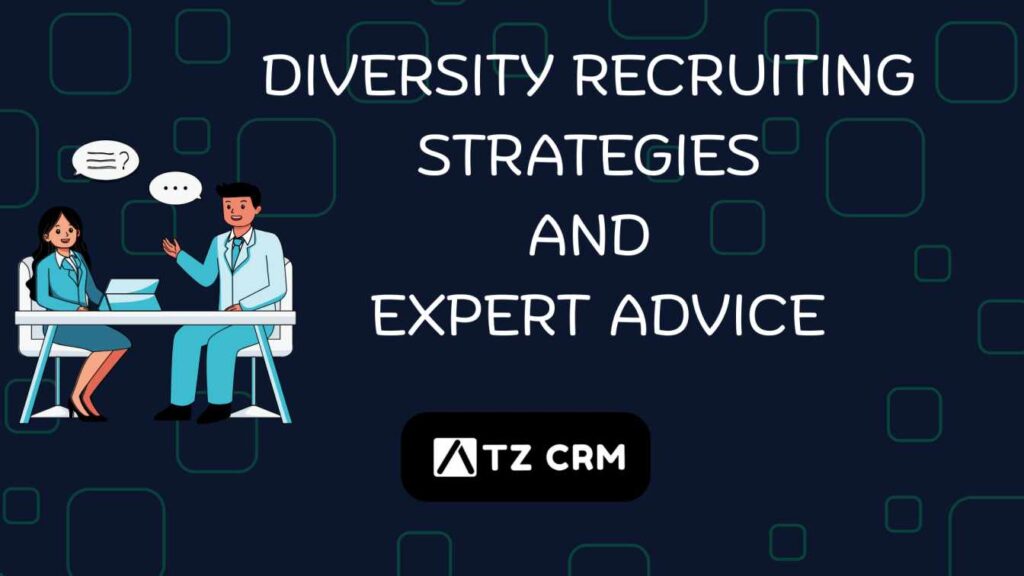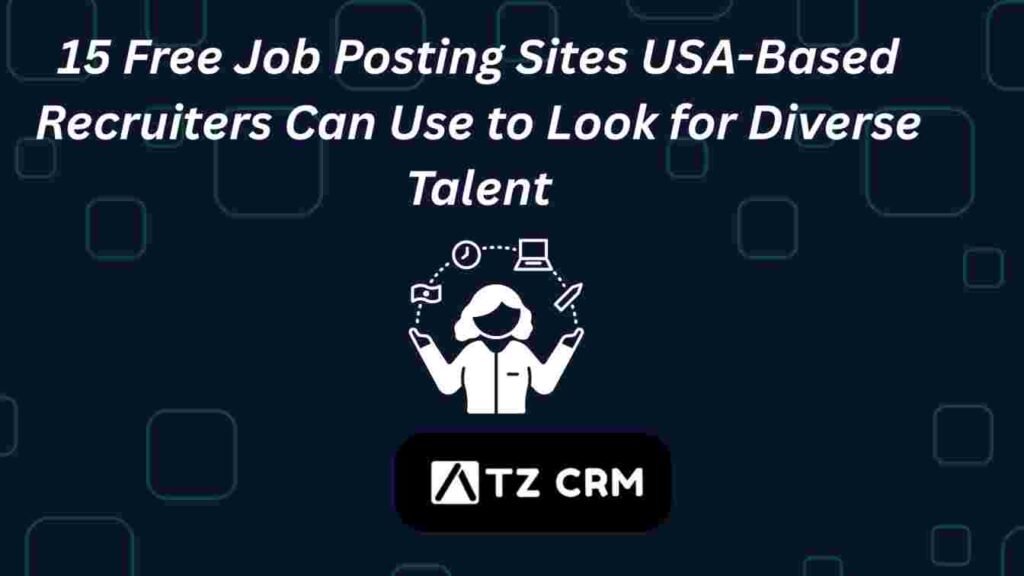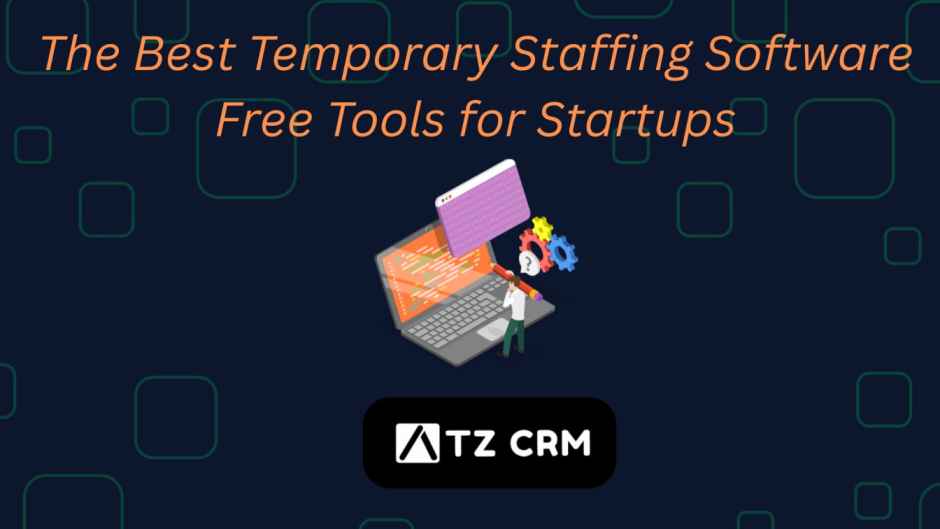Introduction
Recruitment is the process of looking for, finding, and hiring qualified candidates for a specific position or job.
The recruiting process involves multiple stages, starting from identifying what are the qualities we want in the person we are hiring and concluding the onboarding hire.
Key steps of the recruiting process include preparing a job description, sourcing and screening candidates, conducting interviews, evaluating candidates and offering job to the candidate who completed the hiring process and appears to be suitable.
7 steps that are interrelated with each other in the recruiting process
1. Identifying recruiting needs:
Identifying the positions to be filled and the reason why those roles should be filled.
2. Preparing the job description:
Prepare a detailed description outlining the job requirements, responsibilities, qualifications and what they will be expected to do.
3. Talent search:
Identify and captivate candidates who are potential through various media such as online job boards (like Indeed, Linkedin, etc…), social media, and employee referrals.
4. Screening and shortlisting:
Review the application and identify the qualified candidate who best suit the position, and shortlist the candidates for further evaluation.
5. Interviewing:
Conduct interviews for the shortlisted candidates to assess the candidate’s suitability for the role and company, and to know more about their skills, experience and personality.
6. Evaluation and offer of employment:
Evaluate the candidate performance during interview, make decision accordingly and offer the employment focusing on both the candidate’s strengths and the company’s needs.
7. Introduction and onboarding of the new employee:
Make a formal welcome to the new member and introduce to the team and familiarize them with the company and provide resources they need to succeed in the given role.
Give a brief explanation about their role and responsibilities in the company’s growth and overview of the company which gives brief overview of the company’s history, mission, vision, and values.
Policies and procedures of the company, including employee handbook, code of conduct, and work place health and safety guidelines.
Additional steps that might help:
1. Background check:
Verify the information provided by the candidates to ensure a safe and trustworthy workplace.
2. Reference check:
Reference check helps in verifying the accuracy of the candidate’s resume and information provided during the interview process and to gather information about the candidate’s work ethic, skills, and character.
3. Onboarding:
Unite the new employee into the company’s culture, and workplace environment, provide necessary training and resources to help new employees develop the necessary skills to perform their job effectively, and ensure smooth transition.
Related Blog: Discover 10 Free Most Powerful ATS for Small Businesses
Diversity Recruiting Strategies
Diversity recruiting strategies include proactive measures to attract, recruit, and retain individuals from diverse backgrounds, aiming to build a more inclusive and representative workforce. These strategies involve various techniques, including modifying recruitment processes, enhancing employer branding, and implementing inclusive policies.
Let’s have a detailed look at effective diversity hiring strategies:
1. Strategic Recruitment and Sourcing:
Targeted outreach:
Identify and engage with diverse talented people through various channels, such as specialised job boards, professional organisations, and online platforms.
Inclusive Job Description:
Make sure that the job description is free from bias, using inclusive language and focusing on skills and capability rather than a group of people.
Blind Recruitment:
Consider blind resume and interview processes which aims to focus on a candidate’s skills and qualifications rather than factors like gender, race, or age, potentially leading to a more diverse and merit-based workforce.
2. Building an Inclusive Employer Brand:
Showcase Diversity:
Focus on highlighting diverse leadership, engaging with employee resource groups (ERGs), and ensuring visual elements represent a wide range of people.
Communicate your commitment to inclusion through policies and community involvement, and use diverse employee stories and testimonials to showcase your values.
Promote Inclusive Culture:
To promote an inclusive culture implement strategies like offering diversity and inclusion training, embracing multicultural holidays, fostering diverse leadership, and encouraging open communication.
Key values of inclusion include respect, equal treatment, and empowerment.
Communicate your values and commitment to an inclusive work environment to attract candidates who align with your values.
Ensure Accessibility:
Make the recruitment processes and website accessible to every individual, ensuring that everyone has an equal opportunity to apply.
3. Implementing Inclusive Policies and Practices:
Structured Interview Process:
In a structured interview process standardized format and predefined questions are used ti assess candidates in a consistent and fair manner.
This involves asking the same question in the same order to all candidates, and scoring their responses against a predetermined criteria.
Diverse Interview Panels:
Diverse interview panels, composed of individuals from various backgrounds, are beneficial for creating a more inclusive and unbiased hiring process.
By including people with different perspectives and experiences, these panels can assess candidates more thoroughly and fairly, also showcasing the organization’s commitment to diversity and inclusion.
Bias-Free Performance Assessment:
Bias-free performance assessment aims to evaluate employee performance fairly and objectively, minimizing the influence of individual biases.
Implementation of fair and unbiased performance evaluation system can avoid discriminating against specific demographic groups.
Employee Referral Programs:
In employee referral programs, current employees recommend and refer potential qualified candidates for open positions.
Related Blog: The Ultimate Recruit CRM Showdown: Best ATS Ranked
4. Training and Education:
Unconscious Bias Training:
Unconscious Bias Training aims to educate individuals, particularly hiring managers and recruiters, on the existence and impact of unconscious biases, and how to reduce their effects on hiring decisions. This training helps create a more diverse and inclusive workforce by promoting fairness and reducing discrimination.
Inclusive Work Environment Training:
Offer training on diversity, inclusion, and cultural awareness to create a more welcoming and inclusive work environment for all employees.
Inclusive workplace environment training aims at creating a workplace where everyone feels valued and respected, regardless of their background or identity. It focuses on understanding and addressing unconscious biases, promoting cultural competence, and developing skills for effective communication and collaboration with diverse individuals.
5. Measuring and Tracking Progress:
Set Diversity Goals:
Key steps include assessing the current state of diversity, establishing goals, implementing strategies, and measuring outcomes.
Track Key Metrics:
Tracking key metrics is crucial for measuring and tracking progress by providing data-driven insights into performance against goals and objectives.
Monitor diversity metrics such as workforce composition, diversity in leadership, and retention rates to assess the effectiveness of your diversity initiatives.
Examples of Key Metrics:
- Productivity
- Efficiency
- Customer Retention Rate
- Customer Acquisition Cost
- Return on Investment (ROI)
- Conversion Rate
- Customer Satisfaction Score
- Net Promoter Score (NPS)
- Cycle Time
By tracking these and other relevant metrics, organizations can gain valuable insights into their performance, identify areas for improvement, and make data-driven decisions to achieve their goals.
Regular Reporting:
Regular reporting is significant for measuring and tracking progress because it provides a consistent and organized way to monitor performance, identify potential issues early on, and ensure that projects or goals stay on track.
By establishing a regular cadence for reports, individuals or teams can stay informed, make informed decisions, and adapt their strategies as needed.
Regular reporting involves providing regular reports on diversity and inclusion progress to stakeholders and employee.
EXPERT ADVICE ON DIVERSITY RECRUITING STRATEGIES
To enhance diversity recruiting, experts recommend building an inclusive employer brand, setting clear diversity hiring goals, and implementing strategies to reduce bias in screening and interviewing. Expanding sourcing channels, working with diverse employee networks, and offering flexible work potions are also crucial for attracting a wider pool of candidates.
Let’s have a more detailed breakdown of expert-recommended strategies:
1. Build an Inclusive Employer Brand:
Highlight diversity:
Showcase your commitment to diversity and inclusion on your company website, social media, and recruitment materials.
To highlight diversity, organizations should adopt a multifaceted approach that includes inclusive job descriptions, blind resume screening, diverse sourcing channels, bias-free interview processes, and diverse hiring panels. This involves actively seeking and engaging with diverse talent through various channels, while also implementing practices that reduce bias and promote fairness throughout the recruitment process.
Foster a culture of inclusion:
Demonstrate that your company values and supports diverse perspectives and experiences.
To foster a culture of inclusion, prioritize psychological safety by encouraging open communication and valuing diverse perspectives. Promote a growth mindset where mistakes are seen as learning opportunities and foster a sense of belonging where everyone feels comfortable being themselves. Celebrate differences, recognize contributions, and create a welcoming environment for all employees.
2.Set Clear Diversity Hiring Goals:
Define specific goals:
Organizations should create measurable targets that align with their broader business objectives and address gaps in their workforce representation. These goals should be SMART: Specific, Measurable, Achievable, Relevant, and Time-bound.
Establish clear objectives for diversity hiring, such as percentage targets or specific underrepresented groups to target.
Track Progress:
To track progress, organizations should first define clear goals, analyze diversity data, and implement various strategies like blind recruitment practices and diverse sourcing methods. Regularly measuring metrics like retention rates and diversity scores, and analyzing results to identify areas for improvement, is also crucial.
Regular monitoring of the progress and adjusting the strategies as needed to achieve the desired goals.
3.Reduce Bias in Screening and Interviewing:
Standardize interview questions:
Using a pre-determined set of questions for each candidate, in the same order, to ensure consistency and reduce bias. This approach helps create a more objective and reliable evaluation process by allowing for easier comparison of answers and consistent assessment criteria.
Implement blind resume screening:
Blind resume screening involves removing personal identifiers like name, age, gender, and ethnicity from resumes to reduce bias in the hiring process. This allows hiring managers to evaluate candidates based solely on skills and qualifications, leading to more objective and overall hiring decisions.
Ensure diversity on interview panels:
To ensure diversity on interview panels, organizations should actively recruit members from various backgrounds, including gender, ethnicity, age, and abilities. This includes leveraging internal resources like employee resource groups (ERGs) and targeted outreach to diverse communities. Additionally, training panelists on unconscious bias and providing clear guidelines for inclusive hiring practices is crucial.
Include diverse individuals on interview panels to broaden perspectives and reduce the risk of unconscious bias.
Related Blog: How to Create an Amazing Database for Recruitment
4. Expand Sourcing Channels:
Reach out to underrepresented candidates:
Actively target candidates from diverse backgrounds through specialized recruitment platforms and partnerships.
To effectively reach out to underrepresented candidates, it’s crucial to diversify your sourcing methods, build relationships with relevant organizations, and utilize diverse job boards and platforms. Also, consider using referrals, attending career fairs, and leveraging technology to identify and connect with these talent pools.
Work with diverse employee networks:
Promote diverse referrals through employee networks.
Working with diverse employee networks involves using the unique perspectives and backgrounds of employees to promote a more inclusive and innovative workplace. These networks help to improve communication, collaboration, and engagement, ultimately leading to better business outcomes.
Utilise internships and mentorship programs:
Internships and mentorship programs create a talent pool of potential employees, encouraging strong relationships with educational institutions, and showcasing the company’s culture and values. By using these programs, companies can identify and attract talent, build a positive employer brand, and ultimately improve the quality and diversity of their workforce.
5.Create Inclusive Job Descriptions:
Use neutral language:
Avoid jargon and culturally biased phrases that could discourage diverse applicants.
Employers should use gender-neutral language in job description to eliminate bias. Instead of using pronouns “he/she” or “him/her” use gender-neutral language like “the applicant” “the candidate” and focus on skills and experience.
Clearly state a commitment to a diverse and comprising workplace in the job description.
Focus on essential qualifications:
When crafting a job description, make sure that it clearly outline the minimum requirements for education, experience, skills, and certifications that a candidate needs to be considered for the role, rather than including a long list of “nice-to-haves”.
By focusing on essential qualifications, the job description helps ensure that only truly qualified individuals apply, saving time and resources for both the hiring manager and the candidate
6. Offer Flexible Work Options:
Remote work:
Remote work option allows employees to choose flexible work arrangements and flexible work options. This flexibility includes options like remote work, hybrid work, and compressed workweeks, as well as flextime and flexible scheduling.
Consider offering remote or hybrid options to accommodate diverse needs and preferences.
Flexible scheduling:
Flexible scheduling allows employees to work outside traditional 9-to-5 hours, offering more control over their work hours and potentially improving work-life balance.
7. Evaluate and Improve:
Track diversity metrics:
Tracing diversity metrics is crucial for evaluating and improving diversity, equity, and inclusion (DEI) efforts. These metrics help organizations quantify progress, identify areas for improvement, and demonstrate the impact of their DEI initiatives. By tracking data, organizations can set goals, track progress, and ensure transparency and accountability.
Monitor diversity hiring data to assess the effectiveness of your strategies and identify areas for improvement.
Seek feedback from diverse employees:
Organizations should effectively gather feedback from diverse employees for evaluation and improvement, and actively listen to and analyze the feedback received. This process should be ongoing to ensure continuous improvement.
Organizations should actively seek feedback from diverse employees to understand their experiences and address any concerns.
Conclusion
Building a truly diverse and inclusive workforce is not a one-time initiative—it’s a continuous, evolving commitment. By implementing strategic recruitment methods, fostering inclusive workplace culture, and regularly evaluating progress, organizations can cultivate a thriving environment where all individuals feel valued and empowered.
Diversity recruiting is more than just a hiring strategy—it’s a critical component of long-term business success and societal impact. Start by taking small, consistent steps, and over time, these efforts will transform not only your hiring practices but your entire organizational culture.
Looking to streamline your recruitment process while staying committed to DEI goals?
Try ATZ CRM—an affordable, all-in-one ATS + CRM built for modern recruiting teams. Whether you’re improving candidate sourcing, interview coordination, or exploring AI-based survey solutions like Weavely, every tool you adopt should support a more inclusive and efficient hiring journey.
FAQs
Q1: What is diversity recruiting and why is it important?
ANS: Diversity recruiting is the practice of intentionally seeking out and hiring candidates from various backgrounds, including race, gender, age, ability, and more. It’s important because it fosters innovation, improves decision-making, and better reflects the diverse customer base many businesses serve.
Q2: What role do employee referral programs play in diversity hiring?
ANS: When leveraged intentionally, referral programs can tap into diverse networks and bring in underrepresented talent, especially when current employees are encouraged to refer individuals from varied backgrounds.
Q3: How does offering flexible work options support diversity?
ANS: Flexible schedules and remote work options can attract talent who may have caregiving responsibilities, disabilities, or other needs that make traditional work setups challenging.
Experience the full power of ATZ CRM with a free trial – no credit card needed!
Test all our features before making a commitment. Ready to see our ATS + CRM in action?


